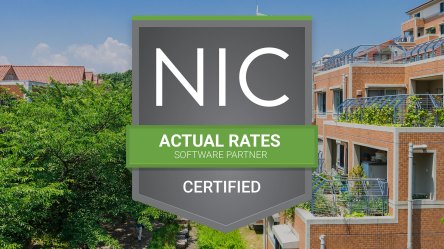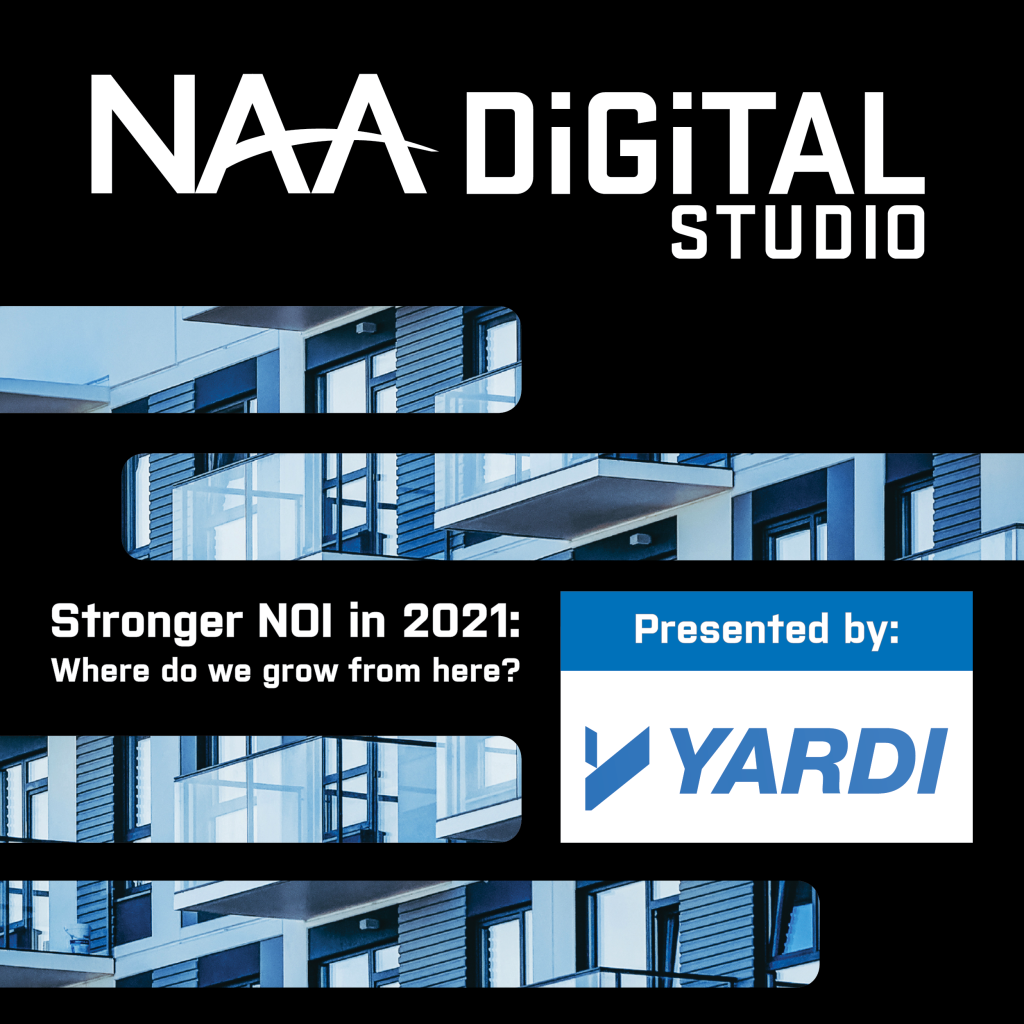As optimism in outlasting the COVID-19 crisis continues to grow, senior living providers face a new challenge — navigating the business world in the pandemic’s aftermath. Recognizing the need for expert insight, McKnight’s Senior Living is featuring three industry executives in a digital power panel on May 5, 2021. The session will break down strategies in maneuvering through the coming months and beyond. And set to speak is Yardi’s own Fil Southerland, a seasoned expert in the LTPAC industry. Topics at a glance Sponsored by Yardi, the McKnight’s power panel — Preparing for business after the main COVID-19 storm — will explore a range of topics. With an expert viewpoint and strategies to share, Fil Southerland will cover the following subjects, plus more: How to improve operations, both post-pandemic and in generalWhy digital workflows are a mustThe industry’s shift toward interoperabilityStrengthening resident and family engagement, digitally and in person About Fil Southerland Fil Southerland has been involved with the LTPAC industry for over 15 years, and currently serves as Director of Healthcare Solutions at Yardi, where he leads initiatives in electronic healthcare records and interoperability. Prior to his time at Yardi, Fil served as Founder and CTO of ALMSA, Inc., a nationally recognized cloud-based electronic health provider in the Assisted Living industry. With expertise in Health Information Technology, digital privacy and LTPAC policy and interoperability initiatives, Fil is passionate about using technology to improve outcomes for residents and care providers. Don’t miss Fil’s insightful contribution, along with two other expert speakers, on May 5 at 1 p.m. EDT. Save the date and register...
Market Insights
For Singapore and Malaysia
Last year was a tough one for commercial real estate in Singapore and Malaysia. But with record-breaking transaction volumes rounding out 2020 and Covid-19 vaccines rolling out at speed, there’s hope on the horizon. Yardi recently brought together some of the region’s brightest economic brains to unpack the data and unearth the trends. Here are their top five insights to help guide investment decisions in 2021 and beyond. Both markets are on the move Oxford Economics is predicting a GDP growth rebound of 7.1% in Singapore and 5.4% in Malaysia. Singapore is likely to return to pre-Covid levels in the second quarter and Malaysia in the fourth. But “growth recovery is dependent on health success” and is tied to each country’s efforts to contain Covid infections, warned Oxford Economics’ lead economist for Asia, Sian Fenner. The vaccine rollout is key to recovery, Fenner emphasised. In Singapore, just under 24% of the population has received its first dose. A 80% vaccination rate – and with it herd immunity – will be achieved in Singapore by the third quarter. While just 2-3% of Malaysians are currently vaccinated, 70% of the population will be fully vaccinated by the end of the year, Fenner said. Economic scars will take time to heal Rebound and recovery in both nations will be influenced by “economic scarring,” Fenner told Yardi’s engaged audience of property professionals. It will take time for businesses to repair their balance sheets and for the labour market to address skills mismatches, she explained. Singapore has followed a V-shaped recovery after an historic fall in GDP. “Singapore has almost recouped its loss in output and its GDP is now close to its pre-pandemic level,” Fenner’s colleague and Oxford Economics economist Sung-Eun Jung said. But this headline figure masks...
ASHA Marks 30 Years
Of Senior Living Advocacy
It’s an honor to celebrate years of service in senior living, especially for a trusted industry leader like the American Seniors Housing Association (ASHA). As of April 2021, ASHA celebrated 30 years of positively impacting the senior living sector — commemorating various achievements from their three-decade journey. Formed in 1991, the association has provided exceptional support for senior living providers. ASHA continues to engage in the finance, development and operation of the full spectrum of housing and services for seniors. Representing the interests of over 500 companies today, this spectrum includes independent living, assisted living, memory care and continuing care. The early days In honor of the 30-year anniversary, ASHA president David Schless took the time to reflect on the association’s early accomplishments. “ASHA was initially focused on providing a voice for senior living owners and operators on Capitol Hill,” says Schless in a company letter. “We were laser-focused on issues that impacted senior living communities, which at that time included a lot of fair housing and tax issues.” Schless also acknowledges how ASHA paved the way for senior living data. “Because there was virtually no senior living data in the early 1990s, ASHA filled this void to demonstrate that, among other things, senior living was an investment that could in fact be profitable.” ASHA today With 30 years of experience and achievements, ASHA remains at the forefront of senior living advocacy. Through the work of diligent leaders and teams, the association continues to provide legislative support, research and educational opportunities for providers today. Learn more about ASHA and their efforts in senior...
Energy Bulletins
From U.S. DOE
The following information is courtesy of the Energy Information Administration, a statistical and analytical agency of the U.S. Department of Energy that collects, analyzes and disseminates energy information. Post-COVID consumption lags The U.S. will likely take at least a decade to return to 2019 levels of energy consumption and carbon dioxide emissions due to the impact of COVID-19 on the economy and global energy sectors. “The pandemic triggered a historic energy demand shock that led to lower greenhouse gas emissions, decreases in energy production, and sometimes volatile commodity prices in 2020,” says Stephen Nalley, the EIA’s acting administrator. Around the world, global demand for petroleum products in 2020 fell by 9% from the previous year. Just how long it will take production and consumption levels to return to their pre-pandemic levels depends on a range of factors including the pace of economic recovery, advances in technology and government incentives. “It will take a while for the energy sector to get to its new ‘normal,’” according to Nalley. Battery power charging up A significant number of battery energy storage systems will be added in the U.S. between now and 2050, at which time 59 gigawatts (GW) of battery storage will serve the power grid. Falling battery costs, growth in non-dispatchable renewables (such as solar and wind, which can’t be turned on or off at will) and tax credits are the key drivers of the capacity expansion. Wind becomes a force In 2019 and 2020, developers in the U.S. installed more wind power capacity than any other generating technology. Wind turbine capacity additions in 2020 totaled 14.2 GW, surpassing a record that had stood since 2012. The impending phasing out of the full value of the production tax credit spurred investments in this technology. Congress extended...
YASC Makes a Virtual Return
Online May 18-20
The Yardi Advanced Solutions Conference, which began as two annual events in the U.S. and expanded to encompass six events on four continents, will soon continue its two-decade tradition of helping clients maximize the value of their Yardi software. ”The reason I enjoy YASC is to see new product developments and to understand how other corporations are using the platform,” said Katerina Urquhart of London-based M&G Real Estate, who attended YASC Europe in 2019. “I was able to take classes on the newest products, ask questions on topics I didn’t fully understand and dig into things that interest me,” Marcie Trivette of Fore Property in Las Vegas said last year. “No matter how big or small, every client has a voice with Yardi, and these sessions are great ways to reinforce that,” an executive director with Laramar Communities LLC of Greenwood Village, Colo., noted back in 2010. Last year’s presentations were different, of course. All YASC events were combined into YASC Digital and YASC Global, virtual experiences with a full slate of free on-demand classes, social activities and gala entertainment. YASC Global in October drew more than 20,000 attendees and featured an exclusive performance from internationally acclaimed Icelandic band Of Monsters And Men. With every view triggering a donation from Yardi, the event earned $75,000 for charities. A two-time Grammy Award-winning performer is on tap for the May conference and Yardi again will make a donation for every attendee viewing the show. The next edition of YASC Global happens May 18-20, with 280-plus classes on the latest software innovations for property owners, asset managers, real estate investment managers and others working in commercial, residential, PHA, senior living and other real estate markets. Live chat support will also be available. YASC Global participants can also look forward to social media interaction, daily giveaways, networking opportunities and entertainment. All Yardi clients are automatically enrolled in the conference. “This is the era of continuous connection. But in the world of business, continuous connection hasn’t fully come to fruition. Our goal is to make that happen and provide the tools and technologies that you need,” company president and founder Anant Yardi told 2,500 Yardi clients and staff members who gathered in San Diego for YASC in 2019. Two years later, in vastly different circumstances, that remains the purpose of YASC. Learn more about the benefits Yardi’s global client base gains from this...
Is Air Travel
Cleared for Takeoff?
The increased distribution of COVID-19 vaccines offers hope that commercial air travel can rebound from a year that saw airline revenues fall by 60% from the previous year. The 1.36 million passengers who passed through U.S. airport security checkpoints on March 12 represented the highest volume since the 1.5 million recorded on March 15, 2020, according to the Transportation Security Administration, although the total was well below the 2-million-per-day average in March 2019. “The willingness to travel is still there,” Arjan Meijer, chief of commercial aviation for Brazilian aircraft maker Embraer S.A., said in January. “There will be a push to go travel again as soon as we can.” “Although the next 6–12 months contain risks from pandemic uncertainty, historical trends suggest a faster rebound in passenger traffic, which could make the industry’s long-term prospects more bullish,” notes Ravi Shanker, who covers the North American transportation industry for Morgan Stanley, citing pent-up demand, fewer airline competitors than in past global crises and a more stable fuel-price outlook as key factors. Safeguards in place When air travel reaches pre-pandemic levels, what will the industry’s “new normal” look like? First things first – is it prudent to even consider returning to that volume? One expert thinks so. “The airline industry and airports have taken great steps to create the safest environment that they can,” Becky Lutte, a professor of aviation at the University of Nebraska, Omaha, said in an article published March 12. “It’s really all about passenger compliance – making sure everyone is following the rules and being aware of what’s expected from us.” Those rules encompass much of the guidance that the Centers for Disease Control and Prevention has issued over the past year, include wearing a mask on airplanes and airport premises, maintaining...
Gain Market Data
For Senior Living
How can senior living operators stay competitive in the market? Accessing data on housing rates, pricing and leasing activity is critical. Fortunately, Yardi’s partnership with non-profit National Investment Center for Seniors Housing & Care (NIC) allows operators to share data seamlessly — increasing the amount of information available in the senior living sector. NIC Actual Rates Initiative Launched as the first of its kind in collaboration with Yardi, the NIC Actual Rates Initiative compiles actual rates and leasing activity submitted by senior living operators. Driven by the need to increase transparency in the seniors housing sector, Actual Rates data includes in-place, move-in and asking rates, as well as leasing activity. Yardi clients can easily participate by using Voyager Senior Housing to map and extract rent roll data, which can then be exported to NIC and Excel. Many senior living companies have already committed to providing monthly data feeds for the Actual Rates Initiative — covering more than 250,000 senior housing units nationwide. For more information or to participate, explore the NIC Actual Rates Initiative and complete the online form. NIC MAP Data Service In addition to the Actual Rates Initiative, Yardi collaborates with NIC to provide another avenue for accessing data, benchmarks and insights in senior living. The NIC MAP Data Service offers unbiased market-level data on the entire sector’s property types and care segments — supplying data from more than 15,000 properties within 140 U.S. metro markets. Here’s how it works. To further combat the lack of transparency in senior living pricing, participation in NIC MAP allows data to flow into Senior IQ, our business intelligence solution. Yardi clients who have an active NIC MAP account can benchmark against competitors on occupancy, rent and rent growth. For those that do not yet subscribe to NIC MAP, internal benchmarks are...
Brightview Shines
Fortune 100 ‘Best Company’
Brightview Senior Living, operator of communities in eight Eastern U.S. states, has won accolades over the years from workplace culture authority Great Place to Work® and Fortune magazine for being among the country’s best workplaces for women and for aging services. In April, the Baltimore-based Yardi client claimed yet another honor: a place on the coveted Fortune 100 Best Companies to Work For list. In an interview with McKnight’s Senior Living, Brightview CEO Marilynn Duker said that the company earned its No. 92 ranking with a supportive work culture and strong core values, which Brightview summarizes as STARS (service, teamwork, action, reputation and success). That foundation, in turn, enables the company to create great places to live. The core values are embedded in all onboarding, training and performance review activities. “We worked really hard to make sure at all 42 of our open communities and our home office that our associates came first,” Duker said. One example of Brightview’s “people first” focus happened last year at the outset of the COVID-19 pandemic, company president Doug Dollenberg told McKnight’s. The company provided premium pay, food pantries and free meals for workers, among other benefits. Many employees reported that they felt safest at a Brightview community, he said. Fortune 100 Best Companies rankings are based on employees’ responses to a survey that measures trust, daily experiences with company values, the ability to contribute new ideas, leadership effectiveness and other attributes. In compiling this year’s list, Fortune found that 89% of Brightview employees consider the company a great place to work. Ninety-two percent feel a sense of pride and a similar percentage agree that “my work has special meaning: this is not just a job.” “There are a lot of amazing companies doing great work in the...
ARPA-E Projects
Push Energy Progress
Buildings account for 72% of the United States’ electricity use and 40% of the country’s carbon dioxide emissions each year. The Advanced Research Projects Agency-Energy, which carries out R&D for the U.S Department of Energy, sponsors initiatives by businesses and academic institutions to improve buildings’ energy efficiency. Here’s a summary of some active ARPA-E projects. Promoting a healthy cold According to ARPA-E, 5% of CO2 emissions come directly from air conditioning, which uses refrigerants that are greenhouse gases. American Superconductor of Ayer, Mass., is developing a freezer that doesn’t rely on harmful refrigerants and would operate more energy-efficiently than conventional systems. American Superconductor proposes to use helium gas as the cooler’s refrigerant, superseding liquid refrigerants that are eventually pumped out to the external environment. The eventual goal is the cost-effective mass production of high-efficiency freezers that do their job without pollution-generating refrigerants. Efficiency in motion A team at Boston University is developing an occupancy sensing system designed to estimate the number of people in commercial spaces and monitor how that number changes over time. The proposed system would generate occupancy estimates using advanced detection algorithms that interpret data streams from sensors and cameras. The occupancy data would enable the building control system to manage the heating, cooling and air flow to maximize building energy efficiency and optimize comfort. This could go a long way in making Boston office space, indeed office space across the world, more efficient. The project could “dramatically reduce the amount of energy needed to effectively heat, cool and ventilate buildings without sacrificing occupant comfort,” ARPA-E says. New pane, new gain Single-pane windows that are present in many buildings don’t insulate as well as double-pane units. Unfortunately, replacing them with newer, more efficient windows isn’t always feasible because of costs, changes...
Retain Top Talent
Administrative Professionals Day
A resourceful administrative assistant is worth their weight in gold (or palladium for that matter). Admins are the backbone of the company: from facilitating events to communicating between departments and clients, they keep day-to-day affairs running smoothly. April 21 is Administrative Professionals Day, but the celebration doesn’t have to end today. In fact, it’s important that the celebration continues if you aim to retain your top talent. Below are a few practical tips to help you get started. Schedule ways to show that you care. One of the best ways to celebrate administrative professionals is to extend the celebration beyond one day. Sure, flowers and a certificate of appreciation are nice. But when you want to improve employee satisfaction and promote company loyalty, the day-to-day actions are what matter most. Consider putting a reminder on your calendar at least once per quarter. Schedule a simple way to let your admin know that you appreciate their efforts. It could be a grand gesture like a spa retreat, of course, but smaller gestures are also valuable. Consider a collectible item that you know they like or an extended lunch break. The key is to consistently show that you appreciate them. Ask. Listen. Respond. Find time outside of their performance review to check in. Sometimes, it’s as simple as asking “How are you?” if you don’t already do so. You can begin with a check-in template. You may also consider asking any of the following questions, personalizing them as you see fit: What would make your work here more rewarding? What could we do to support you and your work? What do I do as a manager that’s currently a roadblock? If the last question felt like a punch to the stomach, don’t be afraid. Craig Cincotta,...
Aegis Living
Named Great Place to Work
While the past year has been challenging for senior living providers, they haven’t lost sight of what’s important — keeping residents, families and staff safe and healthy. And for Aegis Living, their dedication and genuine efforts haven’t gone unnoticed. Not only is the company prioritizing resident care in the face of COVID-19, they’re also working to protect the well-being of their employees. That’s why they’re certified as a great workplace by independent research firm Great Place to Work US. “With nearly 2,000 team members surveyed across 32 locations, Aegis Living received a 75% trust index score after being evaluated on more than 60 criteria of team members’ experience on the job, including community impact and feeling that their work has special meaning,” shared Aegis Living on LinkedIn. “We’re so proud of our teams and our purpose-driven organization.” Building a stronger culture Meeting the criteria for a Great Place to Work certification is no easy feat. Leaders must constantly strive to build a better environment for their employees — laying the groundwork for an inclusive culture, high levels of trust and a true passion for the work being done. Dwayne Clark, founder and CEO of Aegis Living and Senior Housing News/Yardi Changemaker, has built just that. With extensive experience in senior living, Clark has focused on listening to employees, incorporating their ideas and helping them pave a successful career path. And since starting Aegis 20 years ago, company culture has remained a top priority — including during the pandemic. Clark attributes a large part of the company’s success to his team. In this light, Aegis Living’s admirable culture is a combination of excellent leadership and dedicated employees. Becoming an award-winning provider Aegis Living’s recognition doesn’t stop there. In addition to the Great Place to Work...
Promoting Health Sharing
With Senior EHR Tech
Electronic health records, or EHRs, have evolved into a necessity over the past few years in the senior living industry. In fact, a LeadingAge study in 2019 found that nearly 76% of the nation’s 200 largest nonprofit, multi-site senior living organizations use EHRs, as do the majority of single-campus senior living communities. EHRs enable care staff to chart and document residents’ medications and transitions between care settings in real time. Along with this efficiency, notes PharMerica, a pharmacy services provider for the senior living industry, senior community operators “are finding that EHR can help do things like boost occupancy and profitability. And vendors are finding easier to promote EHR benefits around greater resident engagement, streamlined workflow and reduced staff turnover.” Additional benefits of EHRs include facilitating Medicare and Medicaid reimbursements and ensuring compliance. Interoperability is crucial There’s yet another dimension to EHRs. Senior Housing News reports that some providers adopting EHRs “are actually going a step further to connect those EHRs to larger networks in the interest of electronically sharing information with doctors, hospitals or other clinicians.” Making such exchanges securely across multiple systems requires connection to a service provider for health information exchanges, or HIEs. “It’s only a matter of time before mounting state and federal pressure to connect EHRs to HIEs becomes too difficult for senior living providers to ignore,” the news source reports. Some in the industry are still playing catch-up. Clinical information is still often shared via fax, phone or printouts, opening the door to mistakes and omissions. And patients often receive paper medical records when they are discharged, creating additional opportunities for documentation errors and impeded care coordination. “The COVID-19 pandemic has amplified the importance of interoperability and the ease in which clinical information needs to be available to an entire healthcare community,” says Jon Elwell, CEO of Scottsdale, Ariz. interoperability provider Kno2. “We cannot rely on paper fax for this important task.” Creating seamless transitions Going forward, the need for interoperability among acute care, private practice, skilled nursing and other healthcare partners will spur the development additional for care transition and coordination. That means “seamless care transitions and sharing of critical patient information between the senior living community and the providers participating in their care, improving coordination and reducing administrative burden from a historically manual process,” Elwell says. Once implemented, this interoperability will spur “increased efficiency and quality outcomes, improved ability to avoid adverse events and timely access to information from your patients’ other providers,” according to the Minnesota Department of Health. “Creating shared care plans and following up on the execution of those plans to optimize outcomes, reduce length of stay, or eliminate unnecessary hospital admissions via HIE will be key,” adds Majd Alwan, senior vice president of technology and executive director of the LeadingAge Center for Aging Services Technologies, an advocate for technologies that improve the aging experience. Yardi’s contribution to EHR interoperability includes a partnership with Kno2®, whose Interoperability as a Service™ drives connectivity for health data networks. Interoperability as a Service’s integration with Yardi EHR lets Yardi clients electronically send and receive health data, ensuring safer clinical care transitions. Look to The Balance Sheet for more updates on the continuing evolution of EHR capabilities, which PharMerica says have the potential to “revolutionize the way seniors are treated and cared for in the years to come.” For more on Yardi’s electronic health record solution for senior living, visit the Yardi EHR product...
Safe Spring Fun
Multifamily Tips for Spring Gatherings
Spring has sprung! Your residents are itching to enjoy the warmer, longer days together. They will likely begin to invite more family and friends. The tips below can help you create warm weather fun that prioritizes total wellbeing. Check local health mandates before creating your event. Each state has different rules regarding group gatherings, social distancing and mask requirements. Check coronavirus restrictions and mask mandates for your state as well as local governments. Practice vaccination safety. As vaccine availability increases, many residents may have questions about vaccines and their implications for group gatherings. The CDC offers guidelines on what to expect after getting a COVID-19 vaccination. Per the CDC, it takes approximately two weeks for the body to build protection after both single and double-dose vaccines. Your team may take this into consideration when hosting in-person events. Consider these easy gathering hacks. For most properties, outdoor events may be the easiest way to encourage safe practices during gatherings. You can enjoy the indoors together as well. Below are a few considerations. Films on the Green – outdoor movie viewings are an easy way to promote community while practicing social distancing. Consider asking residents to bring their own drinks and snacks. Pool Party – The pool is always a warm weather favorite. Fortunately, there is no evidence that COVID-19 can survive in chlorinated pools, hot tubs and spas. While those water features may be safe zones, the entertainment spaces around them will require regular care. Explore reopening strategies for multifamily amenities. Gaming Parties – Find the kids and teens in their natural habitats—parked in front of their gaming consoles! By organizing gaming parties, you can help young, new residents meet other kids while practicing social distancing. Continue to guide residents towards helpful resources. Last but certainly...
Shine On
Yardi Awarded Highest EPA Honor
The U.S. Environmental Protection Agency (EPA) and the U.S. Department of Energy (DOE) have honored ENERGY STAR® partners from 39 states for outstanding leadership in reducing energy bills and tackling climate change. This year, Yardi has received the highest honor — the 2021 ENERGY STAR Partner of the Year Sustained Excellence Award. For the third consecutive year, Yardi has excelled as an ENERGY STAR Partner of the Year in its ongoing commitment to help educate and support its clients through energy management software with a built-in dashboard for ENERGY STAR scores and benchmarking using ENERGY STAR® Portfolio Manager®. Ongoing Excellence “ENERGY STAR award-winning partners are showing the world that delivering real climate solutions makes good business sense and promotes job growth,” said Michael S. Regan, EPA administrator. “Many of them have been doing it for years, inspiring all of us who are committed to tackling the climate crisis and leading the way to a clean energy economy.” The 2021 ENERGY STAR Sustained Excellence Award acknowledges Yardi’s technology solutions and ongoing philanthropic efforts across a variety of real estate sectors including: Helping more than 140 clients benchmark energy in over 3,500 buildings Benchmarking water in over 3,000 buildings Promoting the importance of ENERGY STAR scores to clients through education, training and visibility Including ENERGY STAR in Yardi’s energy management software dashboard Publishing more than 32 articles on the benefits of benchmarking, energy management and other conservation topics Providing digital courses for over 36,000 attendees from more than 58 countries during its virtual user conferences Again earning ENERGY STAR certification for its Southern California corporate headquarters Akshai Rao, vice president at Yardi, sees the award as a reflection of the company’s clients and their impressive achievements in energy management and conservation. “We’re proud of our clients’ achievements using ENERGY STAR resources to meet their business and sustainability goals. Our benchmarking increased by more than 50% over last year. This is due in part to rapid adoption of ENERGY STAR benchmarking to better understand remote work environment impacts on building energy use during the COVID-19 pandemic. We look forward to helping our clients and the industry gain even more ENERGY STAR benefits moving forward,” said Rao. Your Turn to Shine For a complete list of 2021 winners and more information about ENERGY STAR’s awards program, visit energystar.gov/awardwinners. To learn more about getting support for your company’s energy management and sustainability goals, join a free energy management...
NAA Digital Studio
Achieve Stronger NOI in 2021
Do you want to emerge from 2021 with a more efficient, agile and profitable organization? Discover insights to help you reach your goals during the National Apartment Association (NAA) Digital Studio Series! Stronger NOI in 2021 The April NAA Digital Studio, presented by Yardi, is a half-day event including deep dive and interactive sessions, industry panels, networking and more. This month’s theme is “Stronger NOI in 2021: Where do we grow from here?” Experts from leading multifamily companies across the country will discuss the many ways in which COVID-19 has impacted the real estate industry and, more specifically, apartment management. Each session features unique programming that tackles common industry challenges. Through the sessions, you can: Explore market changes and projected financial impacts to help you plan smarter in 2021 and beyond. Gain insights from multifamily leaders who will share new performance metrics they’re using to change the way they do business. Discover ways to improve net operating income beyond rent increases. Featured speakers include guests from Luma Residential, Bell Partners, BH Management Services, Cirrus and more. Industry professionals focused on operations, marketing, technology and related roles will walk away with practical, actionable items to strengthen your organization. Work + play The event kicks off with keynote speaker Jeff Adler, vice president of Yardi Matrix, offering an engaging look at the latest multifamily data. Examine changes in rent growth, occupancy, retention and renter preferences over the last 12 months. Learn how new demographic patterns have affected top and bottom markets. Attendees will also see rent and occupancy forecasts for a variety of property groups. Then, stick around for additional sessions that connect the market update to real-life experiences and plans to protect NOI going forward. End the day with a relaxing musical interlude. Leslie and...
Leaders’ Vision
For Senior Living
Senior Housing News polled several industry leaders for their thoughts on what’s ahead for their organizations and the industry in 2021. Excerpts follow. Solera’s Kaplan: Vaccination tops the list Adam Kaplan, CEO of Solera Senior Living, ranks successful vaccine planning and implementation as the Denver-area community owner and operator’s No. 1 priority. “I’m excited for a day in which close to 100% of our residents, family members and team members have been vaccinated, and thus the risk of a [COVID] outbreak is reduced to the degree in which almost all of the restrictions are lifted and thus the focus/energy can be re-weighted to other priorities,” Kaplan says. Developing talent and implementing innovative technologies and services round out Kaplan’s list of immediate priorities. Aegis Living’s Clark: Boom time for demand “I think there’s this backlog of people that’s going to pump up occupancies,” says Dwayne Clark, founder and CEO of Bellevue, Wash.-based Aegis Living, a leading provider of assisted living and memory care. “So, you’re going to see this dip where demand keeps going up, but product is not available. That’s really going to impact demand in the short-term and probably the mid-term,” which, looking ahead several years, is “very good news for the industry.” Clark also foresees a new emphasis on nurses and doctors on the front lines of assisted living facilities as part of a “more wellness-oriented” trend that encompasses “everything from the way [care providers] design air filtration systems to foods.” In fact, he reports, Aegis Living is “looking at foods that help pump up the immune systems of residents and have hired our own registered dietitian.” Sequoia Living’s McVey: Going forward, not back Current events constitute nothing less than “history … being made in our industry,” and Sequoia Living President and...
Assisted Evolution
In Senior Living
Assisted living facilities, which fill a need for seniors who don’t need nursing homes but can’t live independently, are a mainstay of senior care. The American Health Care Assn./National Center for Assisted Living counts nearly 1 million licensed beds in about 28,900 communities in the U.S. But even as assisted living holds stature as the fastest growing residential housing for older Americans, it may surprise some to learn that this model didn’t assume its present-day form until the 1980s. The roots of assisted living in America can be traced at least as far back as 1713 with the founding of an organization designed to care for seniors in Philadelphia. Foster homes and group homes became the norm later in the century when family members couldn’t care for a senior loved one. By the mid-1800s, religious and fraternal groups opened nonprofit homes for seniors, the genesis of the modern care system. Hundreds of nonprofit old-age homes were built in the late 1800s and early 1900s, with many adding hospitals, staff homes and other structures as their populations grew. Urbanization and tuberculosis epidemics helped spur state and local governments to develop institutions that provided chronic care. Nursing care in homes also became popular, with the number of visiting nurse agencies more than doubling from 1909 to 1924. By the middle of the 20th century, advances in medicines such as penicillin, the expansion of various assistance payments, and the exodus of men and women from the home during World War II were among the factors that prompted the further development of care facilities, including boarding homes for seniors. The private nursing home industry debuted in 1950, serving 270,000 people by 1954. That year, Congress provided funds to nonprofit organizations for the construction of skilled nursing facilities that met certain...
Renters’ Changing Preferences
One Year into the Pandemic
More than a year has passed since we first issued a survey to understand renters’ responses to the pandemic. A new survey reveals surprising ways that renters’ preferences have changed, and which preferences remain the same. What renters wanted The March 2020 renter survey issued by RentCafe.com gave analysts an understanding of renters’ expectations and concerns at the beginning quarantine in the U.S. About 45% of respondents had no concerns in particular. About 18% of renters were concerned if it was safe to move during that time, and 13% were concerned that they would not be able to pay rent in the near future. Concerns aside, 56% of renters were intent to move as scheduled. (About 18% had a lease that expired, and they needed to move.) Only 8% were postponing their move because of the pandemic and putting the selection process on hold. Of renters who were actively searching, 28% sought a unit that was cheaper than their current home. About 5% wanted a floorplan that facilitated roommates so that they could save money. What renters want now More than 10,600 people participated in the March 2021 survey. Survey questions aimed to reveal: how renters’ preferences had changed after a year of shelter-in-place practices their biggest concerns regarding their upcoming move how the pandemic impacted their rental selection More than 50% of renters listed the pandemic as a trigger in their decision to move. Many renters relocated to create a better financial outlook: the top reason for relocation was to save money. Nearly 30% of participants who are in the process of moving sought a better deal. A quarter of participants needed a change of scenery after several months in quarantine, but they didn’t seek a massive change. About 48% of renters preferred to remain in the same city. A noteworthy 90% of respondents sought long-term rentals, which could mean that even those seeking a change in scenery wanted a sense of stability. Others may simply want to lock in a lower rate for longer. Lifestyle improvements ranked third and fourth on renters’ lists. More than 20% of renters searched for open-air amenities and 20% desired more space. Safety less of a priority across the board, yet solo living is on the rise? Have renters relinquished their safety concerns? Concerns still linger, though they’re nearly half as prevalent as before. In 2020, 18% of renters were concerned about whether it was safe to move during a pandemic. Exactly 9% are currently concerned about safety. Last year, about 15% of renters were concerned about the hygiene standards of their community. This year, only about 9% listed hygiene as a concern. Interestingly, 4% of respondents were so concerned for health and safety that they sought to live alone in 2020. Fast-forward one year and that number has risen to 8%. So while trends suggest that health and safety are not as important to renters as they were last year, the amount of renters seeking solitude for safety has increased. Does the pandemic still influence renter relocation? Recent survey participants stated that the pandemic had little influence on whether they move now or later. About 67% of renters currently seeking an apartment are committed to relocating now. As before, necessity motivates most moves today. For 32% of respondents, one of their biggest concerns was if they would be able to pay their rent. Even more renters (34%) are seeking a cheaper unit now that their previous lease has ended. In short, more renters are relocating due to the effects of the virus rather than the virus itself. In 2020, a considerable amount of people relocated to avoid exposure. The 2021 survey suggests that an even larger chunk of people relocated due to lease expirations and the desire for greater financial savings during uncertain times. Learn more about what renters want on the RentCafe.com...
Tenant Experience
COVID Has Changed CRE
“Buildings are the next computing platform.” That’s how Chase Garbarino, CEO of HqO, describes the importance of software and building intelligence as companies seek a safe return to the workplace. Just as books shifted to tablets, music switched from CDs to Pandora and Spotify and taxi service switched to Uber, buildings have transformed from manual and analog to newly digital ecosystems. Without a doubt, the pandemic has accelerated the investment into digital infrastructure for companies of all sizes. On a recent CREtech webinar, “State of Tenant Experience: 2021,” host Michael Beckerman, CEO of CREtech, cited an Ernst & Young report that found businesses could save 11% on per-employee costs by switching to a hybrid work model. This is important for the flexible workspace industry, which has been ravaged by the effects of COVID-19 on workers entering offices. As Garbarino stated, coworking put downward pressure on lease length for years, so the traditional office industry had to focus on customer experience and happiness, partly to counter the growth of coworking. That shift to the value of tenant experience now becomes even more noticeable, as there need to be tangible benefits to returning to an office when a vast majority of employees have not lost productivity working at home. On a recent Realcomm webinar, the panel discussed tech advancements to help workers feel more confident returning to the office. Touchless elevators, apps showing office occupancy and desk availability, as well as air quality sensors that can remove pathogens, are just some of the new ways in which employers are trying to safely welcome employees back. But these advances, as reliable and effective as they are, don’t overcome the fact that only 1% of workers are renting a space outside of their homes while working remotely. Based...
EHR Interfaces
Senior Living Interoperability
Yardi has a long history of providing interface solutions that enable its clients to exchange information with third-party vendors of solutions for applicant screening, online billing payments, renters insurance, service requests and many other business requests. That interoperability extends to senior housing community operators who wish to connect with ancillary operations solution providers. Interfaces allow third-party partners and Yardi EHR users to exchange information seamlessly and securely. Operators can utilize standard interfaces to connect senior living integration partners. Also, operators can optimize care transitions and enable the secure flow of information to and from EHR. Among Yardi’s interface partners for senior living is eMenuCHOICE, a St. Paul, Minn.-based dining management and point of sale application for senior living communities. Other providers that Yardi has welcomed as senior living interface collaborators include abxtracker, which specializes in antibiotic and infection tracking control solutions; Healthconnex, a leading provider of software used for infection prevention and control; and Kno2, which creates centralized accounts that enable efficient and HIPAA-compliant exchanges of resident documents. The list of Yardi senior living interfaces continues to grow. Created in some cases as a result of client requests, the added partnerships will enhance interoperability in such operations as vital signs and weight monitoring, nurse calls and...




















